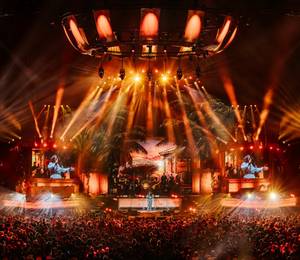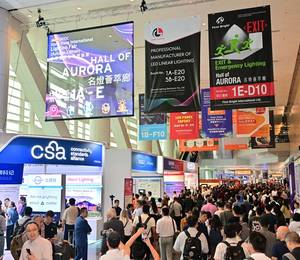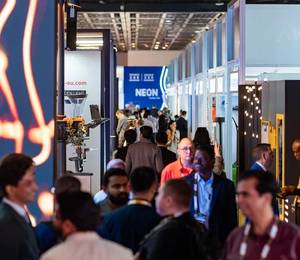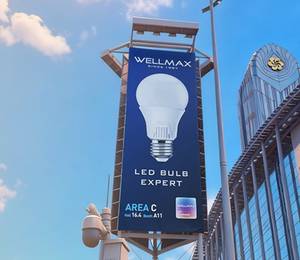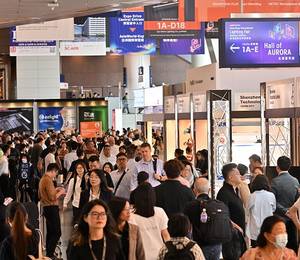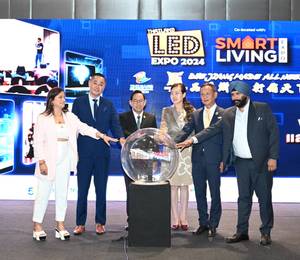The key findings from the report were shared with the United Nations (UN) earlier this week during the “Local 2030: Hub for Sustainability Solutions” Special Event held at UN Headquarters. During the presentation, Philips Lighting highlighted the need for high-caliber data to understand the value of LED systems and how its new partnership with WCCD is addressing this need in collaboration with cities around the world.
The report also showed that the city of Los Angeles made energy savings of 63% in 2016 by implementing such a system, generating cost savings of USD 9m and reducing its annual greenhouse gas emissions associated with public lighting by 47,000 metric ton. This is equivalent to the greenhouse gas emissions from almost 10,000 passenger vehicles driven for one year2.
Philips Lighting says that if cities around the world adopted such systems, they could make vast reductions in their annual emissions and expenditure on electricity.
The report says that better quality lighting could also bring benefits such as reduced crime rates and improved citizen perceptions of safety, with Los Angeles observing a 10.5% drop in crime rates for offences such as vehicle theft, burglary and vandalism in the first two years of its LED conversion program.
Other benefits of connected LED street lighting cited by the report include improvements in traffic safety for all road users, city attractiveness and economic strength. By producing these benefits over and above emission reductions, smart LED lighting will also make a major contribution to meeting the UN Sustainable Development Goals, a globally-agreed set of targets for moving to a sustainable future by 2030.
In Southeast Asia, Philips Lighting has already successfully achieved energy savings through connected street lighting. As part of a city-wide upgrade by DKI Jakarta Government office, nearly 90,000 of the Indonesian Capital’s street luminaires have been replaced with energy-efficient LED lights to-date. These lights are connected to a cloud-based smart lighting management system.
The project, which holds a world record for the fastest turnaround in street lighting implementation, leverages on performance data sent through existing cellular networks to help city officials remotely monitor and manage lighting infrastructure. For instance, in the evening when traffic is low, the lighting office can dim illumination levels by 50 percent to achieve additional energy savings.
The same system was also implemented in Melaka as part of its Green City Action Plan to make the city a Green Technology State by 2020. The new lighting system potentially offers Malaysia’s state government savings of up to 80% and will also improve operational efficiencies as there is less reliance on manpower being mobilized to determine faulty or non-functioning lights.
“City authorities face complex and challenging choices concerning infrastructure, balancing the need to maintain existing services while investing in improvements, managing population growth and enhancing sustainability – all within tight budget constraints,” said Harry Verhaar, Head of Global Public and Government Affairs, Philips Lighting.
“The operation and maintenance of street lighting is a major cost that contributes to these challenges for local authorities. But new technologies are transforming the way cities can deliver, operate and maintain public lighting in a way that can generate a wide range of benefits to the local authorities and the communities they serve. The challenge is building the investment case to enable them to implement this technology in the first place.
“We are calling for all cities to adopt 100% LED street lights by 2025. COP21 sent a clear signal of political support to tackle the effects of climate change, and a switch to energy-efficient LED street lights in cities would make a vast difference. Of approximately 300 million streetlights across the world, only about one in ten are energy-efficient LEDs, and just 2% are connected. Combining energy-efficient lighting with connected system management can deliver energy savings of up to 80% – which would make a significant dent in our climate change targets,” he added.
Lighting currently accounts for 15% of global electricity consumption, but with a universal switch to LEDs, lighting’s share of power consumption would fall to just 8%.
Stumbling blocks to the adoption of public sector smart technology projects include financing projects upfront, particularly with squeezed local authority budgets.
The report presents a measurement framework that can monitor and evaluate city-level impacts of smart and connected lighting investments, arguing that the adoption of standardized city data such as used in Los Angeles will help to inform infrastructure investment and decision-making and build the investment case for smart technology projects.
The WCCD has been mapping its ISO 37120 standard to the 17 themes of the United Nations Sustainable Development Goals, in order to support cities in taking a leadership position to address these goals.
“The ISO 37120 standard that the WCCD is implementing with cities globally defines a comprehensive set of 100 standardized indicators that enables any city, of any size, to assess their performance and measure progress over time in a way that can be accurately benchmarked and compared with other cities,” explained Dr Patricia McCarney, President & CEO, WCCD.
“This data can clearly quantify how investments can improve infrastructure service levels across a city and deliver benefits to its inhabitants. The benefits of smart infrastructure solutions cover financial, economic, social and environmental spheres so this data-driven approach is particularly useful for evaluating these.
“Mayors and city leaders throughout the world are taking on key global issues from climate change to poverty, migration, trade and investment, embodied in the SDGs. High calibre city data that is globally standardised is critical for city leaders to monitor progress on these global goals, benchmark performance and learn lessons from all international regions,” she concluded.
